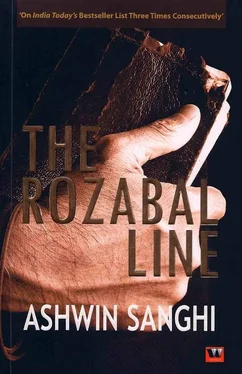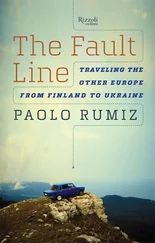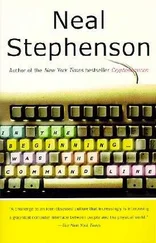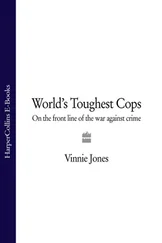Asahara was eventually found hiding in a secret room in the village of Kamikuishiki. He had in his possession a huge amount of cash and gold bars. Many of his followers were also found-comatose, under the influence of pentobarbital, an anaesthetic. Asahara and 104 followers were indicted. Two were not.
Unlike the others, Swakilki and Takuya had been with Asahara for commercial reasons alone. They had no emotional or spiritual ties to Asahara or to Aum Shinrikyo, and they were now free to do as they pleased.
Tel-Aviv, Israel, 1995
On 4 November, Yitzhak Rabin, the prime minister of Israel, was assassinated by Yigal Amir, a right-wing activist. The popularly accepted version of the killing was that the assassin had felt betrayed by Rabin’s signing of the Oslo Accord, which prompted him to take Rabin’s life. [12]
No one knew of the two other international conspirators who had taken the Thai Airways flight 643 from Tokyo to Bangkok and the connecting El Al flight 84 from Bangkok to Tel Aviv.
Madrid, Spain, 1998
Lopez Tomas, president of the Spanish Constitutional Court, was in his office at Madrid Autonomous University when a gunman rushed into his office and shot him at point-blank range.
The commonly accepted view was that the Basque separatist group, ETA, was behind his murder.
The camera-slung Asian couple that had arrived in Frankfurt on Lufthansa’s flight 711 from Tokyo had not bothered to shoot any photographs in Germany. Instead, they had taken the connecting Spanair flight 2582 to Madrid the very same day.
There had been much more to shoot in Madrid.
Dushanbe, Tajikistan, 2001
On 27 October, Otakhon Khairollayev, a journalist of repute from Tajikistan, was shot dead at point-blank range. The same day a Japanese woman had entered the capital, Dushanbe, wearing an Afghan burqa.
Asunción, Paraguay, 2002
On 27 June, Luis Santa Cruz, the finance minister of Paraguay, was gunned down in his car. He had been a likely candidate for President. A Japanese woman had been visiting all the tourist spots, including Asunción, for a week around the same time.
Athens, Greece, 2005
On 16 June, David Roberts, a British military attaché in Athens, was shot dead by gunmen on motorcycles who belonged to N17, the Marxist revolutionary organisation. A honeymooning couple from Japan had been on a cruise of the Greek islands at that time.
Manila, Philippines, 2007
On 26 February, Filemon Montinola, an upcoming left-leaning politician in the Philippines, was assassinated.
A young Japanese woman visited the Minor Basilica of the Immaculate Conception, more commonly known as the Manila Cathedral, in order to light a candle the next day.
Belgrade, Serbia, 2010
On 9 May, Draginja Djindjic, the foreign minister of Serbia, was shot twice in the chest at 11:28 am inside a government building. His assassin, Vojislav Jovanoviae, had fired the bullets from another building in the area. The same building had been visited by a Japanese woman that morning.
Yes, business was good for Swakilki and Takuya. They could now work entirely for themselves, given the fact that Asahara and Aum Shinrikyo were history. It also seemed that no one was really looking for them. Actually, someone was. Swakilki’s Santa Claus. His name was Alberto Valerio.
Vatican City, 2012
Alberto Valerio was busy reading a dissertation by the renowned scholar Professor Terry Acton, head of the Department for the Study of Religions at the University of London. The good doctor had built up a cogent case to prove that Jesus Christ had not died on the cross at all. Alberto Cardinal Valerio took a sip of his Valpolicella, and continued reading:
If the vested interests of the temple Jews had wanted to kill Jesus, they had the power to do so by stoning him to death without taking any permission from Rome. Why did this not happen?
Instead, Jesus was punished by the Romans under Roman law and then crucified-a punishment meted out to enemies of the Roman Empire. Why punish a man under Roman law if he had no political agenda, only a religious one?
Under Roman law, he would have first been flogged, causing a significant loss of blood. In this weakened state, his arms would have been fastened by thongs or nails to a solid wooden beam placed across his shoulders and neck. He would then have been made to walk to the final place of crucifixion while continuing to bear the weight of this beam.
At the place of crucifixion, the horizontal beam would have been attached to a vertical one, with the victim still hanging. Thus suspended, the victim would have been able to survive for a couple of days provided that his feet remained fixed to the cross. His feet remaining fixed would have enabled him to keep breathing by reducing the pressure on his chest.
Eventually, the victim would have died from exhaustion, thirst or blood poisoning caused by the nails. The victim’s protracted agony could have been brought to an end by breaking his knees, causing the entire pressure to shift to the victim’s chest, resulting in immediate asphyxiation. Thus, contrary to popular opinion, the breaking of the knees was not malicious-in fact, it was an act of mercy. Jesus’s knees were never broken, yet he died within a few hours on the cross. Why?
During his suspension from the cross, Jesus said that he was thirsty. Popular opinion tells us that he was sadistically offered a sponge soaked in vinegar instead of one soaked in water. It is worthwhile to note that vinegar was used to revive exhausted slaves on ships. In fact, the vinegar should have revived him temporarily. Instead, he spoke his final words and died immediately upon inhaling the vinegar fumes. Why did it have this opposite effect on him?
There is one possible explanation. The sponge might not have contained vinegar. Instead, it may have contained a compound of belladonna and opium. This would have made Jesus pass out completely, only making it appear that he was dead. This would have prevented the guards from carrying out the final act of breaking his knees, leading to death from actual asphyxiation.
Roman law specifically prohibited bodies of crucified victims being given back to the family. Bodies were meant to remain on the cross to decay or to be consumed by birds of prey. Why did Pontius Pilate, the Roman governor of Judea, decide to ignore Roman law and allow Jesus’s body to be handed over for burial to Joseph of Arimathea? [13]
Alberto Cardinal Valerio smiled a contented smile as he took another measured sip of his delightful Valpolicella. It was time to send another heretic to burn in hell!
Alberto Cardinal Valerio was a jovial, rotund and gregarious individual. His smiling eyes, his pink face and his Buddha-belly gave him the demeanour and appearance of a jolly Santa Claus. The position that he occupied, however, was sombre and serious. He was head of the Archivio Segreto Vaticano, more commonly known as the Secret Archives of the Vatican.
The Vatican Secret Archives were the central repository for all documents that had been accumulated by the Roman Catholic Church over many ages. The Archives, containing thirty miles of bookshelves, had been closed to outsiders by Pope Paul V in the seventeenth century and they had remained closed till the nineteenth.
Alberto Valerio had been born in 1941 in Turin. Ordained in 1964, he had soon been offered his first appointment in the Roman Curia and had rapidly risen through various positions in the Sacred Congregation for Seminaries and Universities till he had eventually become its undersecretary in 1981.
After taking some time off to pursue a doctorate in theology from the Catholic University of Leuven in Belgium, he had returned to the Vatican to become secretary for the Congregazione per le Chiese Orientali, or the Congregation for the Oriental Churches, at which time he had travelled extensively within Japan. He had held several positions within the Curia till he was given charge of the Archivio Segreto Vaticano, a position he relished immensely.
Читать дальше












